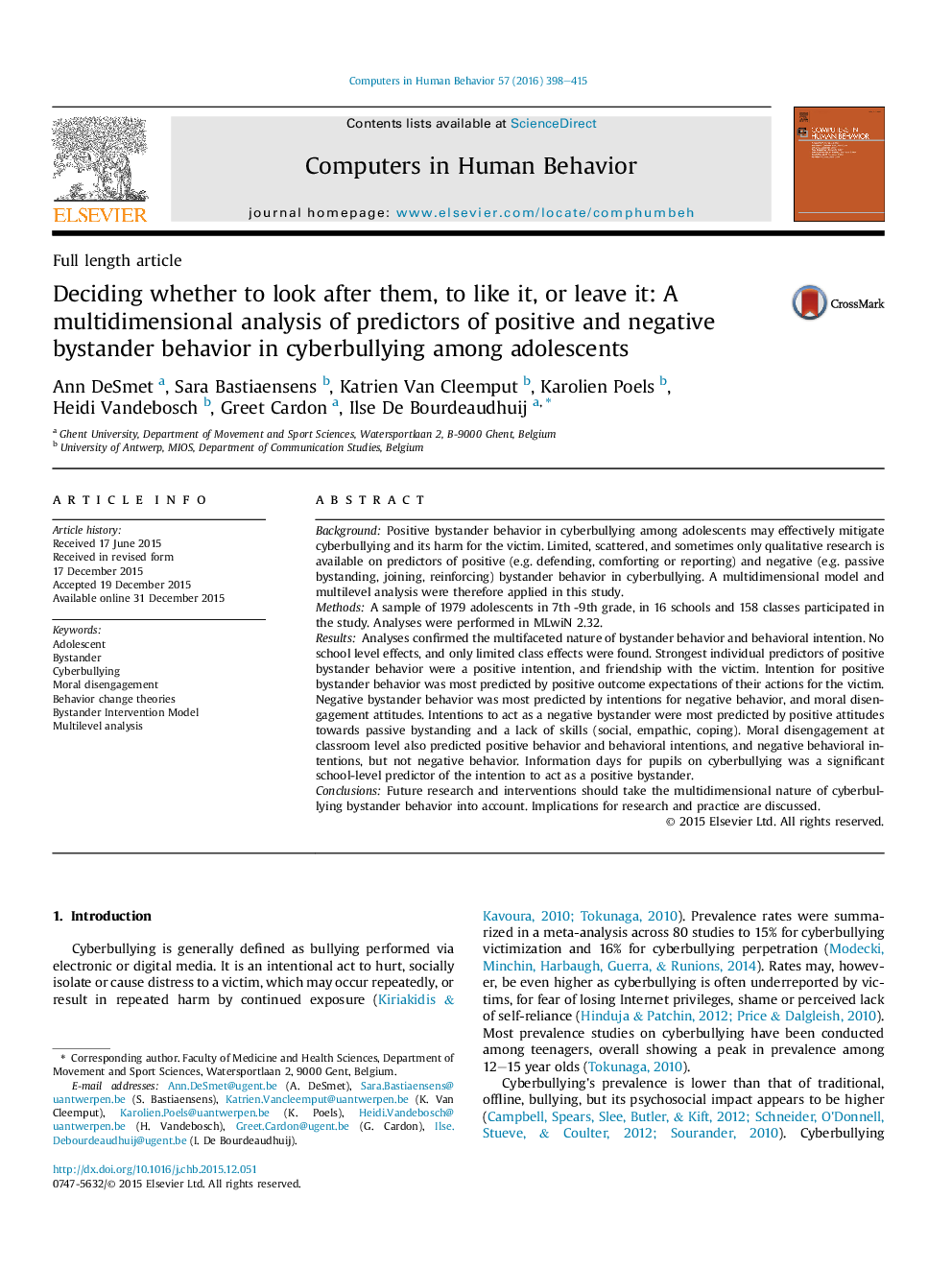| Article ID | Journal | Published Year | Pages | File Type |
|---|---|---|---|---|
| 350249 | Computers in Human Behavior | 2016 | 18 Pages |
•Predictors of cyberbullying bystander behavior are studied among 1979 adolescents.•A multilevel and multidimensional approach was used.•Negative (e.g. passive) and positive (e.g. defending) behavior were studied.•School and class factors were not strong predictors of bystander behavior.•Predictors are multifaceted, and different for negative and positive bystanding.
BackgroundPositive bystander behavior in cyberbullying among adolescents may effectively mitigate cyberbullying and its harm for the victim. Limited, scattered, and sometimes only qualitative research is available on predictors of positive (e.g. defending, comforting or reporting) and negative (e.g. passive bystanding, joining, reinforcing) bystander behavior in cyberbullying. A multidimensional model and multilevel analysis were therefore applied in this study.MethodsA sample of 1979 adolescents in 7th -9th grade, in 16 schools and 158 classes participated in the study. Analyses were performed in MLwiN 2.32.ResultsAnalyses confirmed the multifaceted nature of bystander behavior and behavioral intention. No school level effects, and only limited class effects were found. Strongest individual predictors of positive bystander behavior were a positive intention, and friendship with the victim. Intention for positive bystander behavior was most predicted by positive outcome expectations of their actions for the victim. Negative bystander behavior was most predicted by intentions for negative behavior, and moral disengagement attitudes. Intentions to act as a negative bystander were most predicted by positive attitudes towards passive bystanding and a lack of skills (social, empathic, coping). Moral disengagement at classroom level also predicted positive behavior and behavioral intentions, and negative behavioral intentions, but not negative behavior. Information days for pupils on cyberbullying was a significant school-level predictor of the intention to act as a positive bystander.ConclusionsFuture research and interventions should take the multidimensional nature of cyberbullying bystander behavior into account. Implications for research and practice are discussed.
